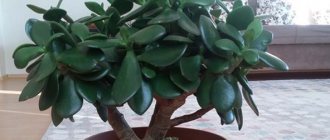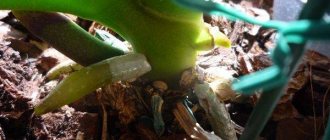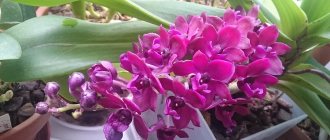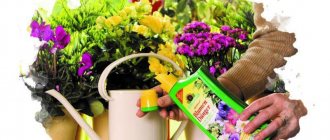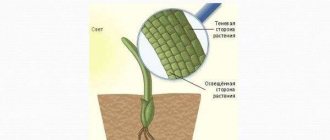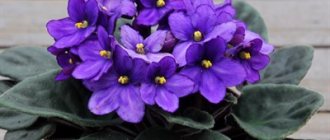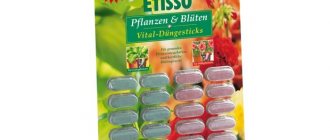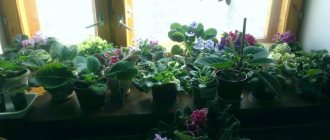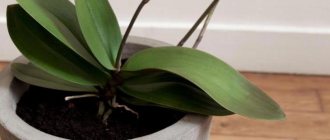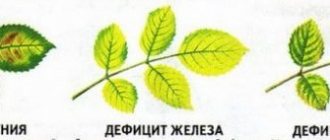Vitamins are just as important for plants as they are for humans. The only difference is that the plant is adapted to independently synthesize vitamins for itself. However, this sometimes takes a lot of energy, which the plant body could use for active development, flowering, setting and ripening of a beautiful, high-quality harvest. Of course, sufficient balanced nutrition at each stage of the life cycle of any crop is important. However, fertilizers are not exactly vitamins for plants, as it may seem to new plant growers. If, in addition to basic nutrition, you give the plant an additional dose of easily digestible vitamins and amino acids, it will save energy on their synthesis, directing it to growth, strengthening the immune system, increasing productivity or enhancing decorative properties.
How to recognize that a plant requires vitamin supplementation?
A lack of vitamins and microelements does not allow plants to reveal their potential, no matter how ideal the conditions are. You can help plants, at least domestic ones, with the help of simple pharmaceutical products. The main thing is to know when to stop and not get carried away, so as not to give your green pets an excess of vitamins and microelements, or, simply, hypervitaminosis, when the plants begin to wither and get sick. It is enough to add a weakly concentrated vitamin solution with watering once every three weeks. Signs of vitamin deficiency include:
- Thinning and weakening of stems.
- Unnatural stretching and deformation of the plant.
- Slowing down or completely stopping growth.
- Lack of flowering.
- Chlorosis
Side effects of water-soluble vitamins
Although cases of overdose of vitamins in this category are quite rare, the following symptoms may occur:
- Anxiety;
- Nausea;
- Itching;
- Rash;
- Severe allergic reactions;
- Weakness;
- Headache;
- Diarrhea;
- Dyspepsia (stomach upset);
- Joint pain.
Check with your doctor before taking medications containing vitamins. Do not change the dosage or frequency of use without consulting a specialist.
Pharmacy vitamins to help the grower
As for humans, ascorbic acid is very important for plants. Vitamin C strengthens the immune system and increases resistance to disease, helps to avoid or treat chlorosis, is a regulator of water metabolism and metabolism, and affects growth. 1 tablet per liter of water for irrigation is enough. You can use ampoules, maintaining a similar concentration of the final irrigation solution. B vitamins for plants are stimulants of metabolism, and also have a beneficial effect on the development and condition of the root system (healthy roots - healthy and above-ground parts). Wherein:
- Vitamin B1 is a growth stimulator that also increases the stress resistance of plants. 1 ml of solution for injection should be diluted in 1 liter of water for irrigation.
- Vitamin B3, or nicotinic acid, is an effective resuscitator, first aid for severely weakened, stunted, dying plants. The proportions are the same - 1 ml per 1 liter. In addition to resuscitation measures, you can add vitamins B1 and B6.
- Vitamin B6 is an immune stimulant and a “savior” of weakened and defective flowers. 1 ml per 1 liter of water.
- Vitamin B12 – stimulates chlorophyll synthesis, photosynthesis and metabolism, activates growth. The proportions for the solution are the same.
What it is?
Every cell in the body has the function of converting amino acids, minerals and other compounds into proteins, hormones and enzymes. Some vitamins are among the compounds formed, so they are necessary for the proper functioning of the body.
Of the thirteen known vitamins, two groups can be distinguished:
- Water soluble. They dissolve in water and the body cannot accumulate them. For this reason, it is necessary to consume them daily. Excess is excreted through sweat and urine.
- Fat soluble. These vitamins dissolve in fat, accumulating in adipose tissue and in the liver. Excessive amounts can be harmful to health, so be careful with dietary supplements and always consult your doctor.
In total, various foods contain the following water-soluble vitamins:
- Thiamine (B1);
- Riboflavin (B2);
- Nicotinic acid, nicotinamide (B3, PP);
- Pantothenic acid (B5);
- Pyridoxine (B6);
- Biotin (B7, H);
- Folic acid (B9);
- Cobalamins (B12);
- Orotic acid (B13).
And only vitamin B10 (para-aminobenzoic acid) is synthesized in the human body. Let's figure out what role each of them plays.
TOP sales - the best vitamin concentrate for plants Hesi SuperVit
Using regular pharmacy vitamins is not always easy, because you can make a mistake with the dosage. If you have the slightest doubt and want complete confidence that the stimulant will work as it should without causing harm, you should pay attention to the proven version of Hesi SuperVit super concentrate. The bottle is small - only 10 ml, but from them you can prepare 650 liters of a solution that will contain 15 vitamins and 10 amino acids that improve the absorption of vitamins and fertilizers from soil or nutrient solution. Just 1 drop is enough to prepare 5 liters of solution for root and foliar treatment. After this, the price is 1181 rubles. no longer seems tall. The stimulant can be used throughout the entire life cycle of plants grown in soil and hydroponics, helping them to demonstrate intensive growth, abundant bud formation and high yield. The quality of the fruit also improves - just read the reviews of plant growers.
Pharmaceutical preparations with a stimulating effect for plants
Aspirin is very good for stimulating plant nutrition. Acetylsalicylic acid strengthens the immune system, helps plants resist fungus and pests, gives a boost of energy to weak and sick plants, and also helps to “wake up” after winter dormancy. Dosage: ¼ tablet per 2 liters of water. Succinic acid is a stimulator of immunity and growth, a protector for roots. The drug helps the root system recover from rot and protects against pests. A solution of ¼ gram of acid per 1 liter of water is used for irrigation, and for irrigation a 1% solution is used (1 g per 1 liter of water). Hydrogen peroxide is another resuscitator with disinfecting properties that blocks the development of pathogens and harmful insects in the soil. It can be used not only in emergency cases, but also for prevention, applied with watering or spraying. Proportions for solution: 2 tsp. drug per 1 liter of water. However, even for treatment, peroxide solution should not be used more than once a week. Glucose is a source of energy and one of the building materials in the synthesis of nutrients. Feeding plants with ready-made glucose for injection allows you to restore the plant when it loses turgor or after drought. If you bought 40% of the drug in ampoules, then 1 ml is dissolved in a liter of water, and if 5%, then 8 ml of glucose is required per liter of water. If the drug is in tablet form, then 1 tablet per 1 liter of water. the solution can be watered and irrigated. An aqueous solution of sodium thiosulfate allows you to remove harmful chlorine from tap water if it is difficult to settle the water for irrigation for 1-2 days. This is especially important for exotic plants that suffer greatly from chlorine. The concentrate is prepared at the rate of 1 ampoule of the drug (10 grams, 10%) per 150 ml of water, and then 1 drop of concentrate is diluted in a liter of water for irrigation. The concentrate can be stored in a closed plastic bottle in the dark for up to a year. Magnesia, or magnesium sulfate, is a source of magnesium, which is one of the important building blocks of chlorophyll and is very important for the normal functioning of roots. A solution of 2.5 mg of magnesium per 1 liter of water is used for watering plants with signs of chlorosis and in a generally depressed state. Ammonia will revive not only a person, but also a plant suffering from a lack of nitrogen and generally remaining in a sluggish, stunted, withering state. Ammonia disinfects the soil, having a detrimental effect on pests and fungi. Used for watering in the form of a solution in proportions of 1 tsp. ammonia per liter of water. A significant improvement in the condition of the plants is observed within a few days. However, you need to fight the temptation to continue in the same spirit due to the high risk of creating an excess of nitrogen in the soil - no more than a couple of times a month. Iodine tincture, although not included in the direct vitamins for plants, is also a good stimulator of growth and flowering, and also enhances resistance to adverse factors. 1 drop of ordinary pharmacy tincture of iodine is diluted in 2 liters of water. You need to water it very carefully - slowly, along the edge of the pot, so as not to burn the roots of the flowers. For 1 average plant, 50 ml of this solution is enough.
Castor oil, despite its origin (seeds of the poisonous castor bean plant), has a wide range of beneficial properties and is also useful to gardeners. Castor oil, used only during the flowering period, as well as special vitamins for plants (since the oil contains vitamins), stimulates abundant bud formation, as well as leaf growth. Plants become beautiful, lush, and healthy. The solution is prepared based on the proportions of 1 tsp. castor oil per 1 liter of water. Can only be used for watering. A weak solution of potassium permanganate, or potassium permanganate, gets rid of pathogenic flora and insect pests, and can be used periodically and for prevention with the function of additionally enriching the soil with potassium and manganese. To prepare a solution for watering, you need to dip the tip of a moistened toothpick in potassium permanganate powder, dip it in warm water (1 liter) and stir well until completely dissolved, then dilute this solution with water until it turns pale pink and water the plants. But you need to act very carefully so as not to burn the roots or acidify the soil too much.
Vitamin B12
Vitamin B12
- is a water-soluble vitamin that belongs to group B. Another name is cobalamins. Cobalamins represent a whole group of vitamins that take part in the metabolism of every cell, influencing the synthesis and regulation of DNA. Vitamin B can only be synthesized by bacteria and archaea (single-celled microorganisms), which have the unique enzymes necessary for its synthesis. The best food sources of vitamin B12 are animal products because they contain bacterial symbiosis.
Forms of Vitamin B12
What is commonly mistaken for vitamin B12 is cyanocobalamin. This form is found in almost most vitamin products. Cyanocobalamin is completely synthetic and does not occur in nature, but is widely used due to its low price and ease of production. When cyanocobalamin enters the body, it must be converted into active forms. The conversion releases toxic cyanide. Although toxic, the amount is negligible to have clear negative effects and therefore should not be considered a clear side effect.
Another problem with cyanocobalamin occurs when it is absorbed. In order for cyanocobalamin to be used by the body, it must go through a process that removes the cyanide molecule, which requires the antioxidant glutathione. The disadvantage of the deacyanation reaction is the unnecessary use of this valuable antioxidant, as well as the dependence of vitamin B12 metabolism on the availability of glutathione.
Unlike cyanocobalamin, two coenzyme forms of vitamin B12 - methylcobalamin and adenosylcobalamin - are biologically active. They take an active part in metabolic and enzymatic reactions.
Methylcobalamin is pre-methylated, which means it is ready to be absorbed by the body. Methylcobalamin is localized in the cell cytoplasm and is a cofactor in methylation reactions. Adenosylcobalamin is important in the oxidation of fatty acids and the main point of its action is the mitochondria of cells.
Metabolism and absorption of vitamin B 12
in the gastrointestinal tract
Vitamin B12 is bound to food protein and becomes available for absorption once released. The process of vitamin elimination occurs under the influence of hydrochloric acid produced by the gastric mucosa. The released cobalamin binds to the R protein and passes into the duodenum, after which the R protein is removed and the free cobalamin binds to intrinsic factor. Intrinsic Castle factor is formed in the glands of the fundus and body of the stomach; it helps convert B12 into an easily digestible form. Vitamin B12-Castle Factor Complex - Absorbed by the distal ileum and the vitamin enters the bloodstream.
Whey vitamin B12 is bound to transport proteins known as transcobalamins. Most of the vitamin, approximately 80%, is bound to an inactive protein called haptocorin. The active transport protein for vitamin B12 is transcobalamin II, which retains 20% of the vitamin in the bloodstream. Holotranscobalamin delivers vitamin B12 to all cells. Low serum vitamin B12 concentrations may be due to transport protein deficiency, while transcobalamin levels and vitamin B12 status remain normal.
Vitamin B deficiency problem12
The main problem with vitamin B12 is that it is difficult to absorb. Nutritional deficiency of vitamin B12 occurs in groups of people who eat only plant foods, minimizing animal products in their diet. Deficiency due to insufficient absorption of vitamin B12 or increased requirements against the background of normal absorption is also common.
A potential risk group includes pregnant women on a vegetarian, vegan or raw food diet.
Elderly people are also a risk group. They are at greater risk of malnutrition due to comorbidities, have difficulty with self-care and food preparation, and tend to suffer from some degree of atrophic gastritis. Inflammatory processes in the gastric mucosa tend to increase in frequency with age, which leads to a decrease in the production of hydrochloric acid, one of the factors in the absorption of vitamin B12.
Castle factor deficiency -
one of the typical causes of vitamin B12 deficiency. The presence of autoantibodies to Castle factor is the leading cause of pernicious anemia against the background of autoimmune gastritis. Resection of the gastric antrum is also accompanied by a deficiency of vitamin B12.
The absorption of vitamin B12 can be impaired in any inflammatory bowel disease. For example, Crohn's disease, parasitic infestations, bacterial overgrowth syndrome - just a small list of the possible list of ailments.
Consequences of deficiency states
Typical manifestations of vitamin B12 deficiency. Disruption of the hematopoietic process with the development of megaloblastic anemia, as well as neurological disorders.
Long-term and chronic deficiency of vitamin B12 is considered as one of the factors in a number of other global medical problems.
The active form of vitamin B12 is directly involved in the metabolism of homocysteine, an independent factor in the development of cardiovascular pathology. By converting homocysteine into methionine, it enhances the synthesis of SAMe (S-adenosylmethionine), the most important donor of methyl groups in the body.
Assessing vitamin B12 status is part of the dementia screening process. Elevated concentrations of methylmalonic acid (MMA) are associated with cognitive decline and Alzheimer's disease. In older adults, low vitamin B12 levels and high serum folate concentrations are associated with increased odds of cognitive impairment. On the contrary, in patients with normal vitamin B12 status, high serum folic acid levels have a protective effect on memory, attention, perception, intelligence, etc.
Vitamin B12 deficiency is associated with the development of age-related macular degeneration (AMD) and the risk of frailty, which are the leading causes of disability in older people. AMD is the leading cause of vision loss in older adults. An increased risk of frailty and disability is associated with poor vitamin B12 status.
Low levels of vitamin B12 are considered a potential risk factor for neural tube defects. Vitamin B12 acts as a cofactor for methionine synthase in the folic acid cycle. When vitamin B12 supply is low, folate remains trapped in the methylation cycle, causing cell replication to fail.
A deficiency of vitamin B 12
can be suspected by such nonspecific symptoms as:
- forgetfulness;
- dizziness;
- pale skin;
- weakness and fatigue;
- tingling in the tips of the fingers and toes.
Laboratory tests can diagnose and confirm deficiency and insufficiency of vitamin B12.
Determination of vitamin B12 deficiency
Traditionally, vitamin B12 status is assessed by serum concentrations, but serum levels alone may not detect subclinical vitamin B12 deficiency or insufficiency.
Methylmalonic acid and homocysteine are recognized indicators of vitamin B12 status. Their measurement is of paramount importance in identifying vitamin B12 deficiency.
MMA is considered a specific indicator of cobalamin metabolism and reflects the availability of adenosylcobalamin in the cell. Homocysteine increases with vitamin B12 deficiency along with a lack of folate and vitamin B. It is the lack of such a coenzyme form as methylcobalamin that provokes an increase in homocysteine levels.
Plasma concentrations of MMA also increase with renal failure, polymorphisms in methylenetetrahydrofolate reductase (MTHFR), or with the use of certain drugs. Plasma MMA concentrations are elevated in renal failure, which is common in the elderly, so this marker is not appropriate for use in this group of patients.
The use of holotranscobalamin as a marker of vitamin B12 status increases the predictive value of identifying subclinical deficiency states. The level of holotranscobalamin reflects the availability of vitamin B12 to all cells of the body, and its determination is desirable when assessing the status of the vitamin in the body.
Conclusion
Vitamin B12 is a particularly important vitamin for women of childbearing age and older adults, but adequate vitamin B12 status throughout life is necessary for optimal health.
What fertilizer stimulates flowering
To prevent the Decembrist from “falling asleep” and stimulate its abundant flowering for the New Year and Christmas, in the summer it should be fed with complex fertilizer for indoor flowers. Finding such feeding will not be difficult. It is sold in almost any store that sells indoor flowers. It is recommended to use this fertilizer for the Decembrist in half the dose. Fertilizer should be applied monthly from June to August.
We take a plastic bottle and bake a whole basket of “mushrooms”: recipe
He works in a women's team: types of men prone to cheating in relationships
Bob-kare is still in fashion: ideas for the most stylish haircuts
You can also stimulate the Christmas flowering of Decembrist in early - mid-December by placing it in a dark place for 12-14 hours. Experienced lovers of indoor flowers simply cover the plant with a thick cloth that does not allow the penetration of either artificial or natural light. In the darkness, the Decembrists begin buds.
What other fertilizers are used for fertilizing?
Thus, Decembrist flowering should be stimulated with the help of formulations containing large amounts of phosphorus and potassium. But, of course, this flower, like any other, requires other microelements for good development.
Daughter and son of Ostap Bender: what happened to the children of Archil Gomiashvili
“Everything hurts, but it’s bearable”: Pyotr Kuleshov admitted that he was vaccinated against COVID
A coronavirus mutation “invisible” to PCR tests has been identified in France
This applies, for example, to nitrogen. When introduced into the soil, this microelement stimulates the Decembrist to gain green mass. Nitrogen fertilizing will ensure the healthy appearance of the green parts of the Decembrist and their proper development. Strong shoots will bloom better later. Any organic matter can be used as a nitrogen fertilizer - infusions of mullein or bird droppings, herbal teas, etc. Of course, in this case, the fertilizer should be applied in half the dose.
You can use nitrogen compounds to feed Decembrist throughout the spring and summer. It is not prohibited to fertilize plants with nitrogen fertilizers in the fall. The Decembrist does not require nitrogen or any other fertilizers only after flowering. During this period, the plant rests and does not need feeding.
How to preserve vitamins when cooking
Different cooking methods bring out flavor and aroma and also make food more digestible, especially the fiber in fruits and vegetables.
However, cooking can destroy vitamins and minerals. How to preserve them as much as possible?
- Vitamin C
afraid of heat, air oxygen and moisture. Therefore, it is preferable to consume raw fruits and give preference to quickly cooking vegetables with a minimum amount of water. Don't soak them for too long.
- Vitamin B1
. Along with vitamin C, it is the most unstable vitamin. It is sensitive to heat and moisture. Ideally, foods containing it should be eaten raw and fresh.
- Vitamin B2
. This is the most sensitive vitamin to light. For example, milk can lose up to 50% of vitamin B2 after just 2 hours of exposure to light. Although it is heat-resistant, avoid boiling pasteurized, sterilized or UHT foods. Likewise, avoid cooking food for too long.
- Vitamin B5
. It is not very sensitive to light or oxygen; humidity and heat pose a danger to it. When cooked in water, some of the B5 is lost, so avoid overcooking the food.
- Vitamin B6
. This is a fragile vitamin that is destroyed by exposure to light. Industrial processing, such as refining, also reduces the amount in food. Therefore, food should be kept away from light, not soaked in water for too long, and short cooking should be preferred.
- Vitamin B9
. It keeps better in an acidic environment, so add a little vinegar to the cooking water.
Let us add that one of the most preferred processing methods for many products is steaming.
Where should the flower be in the room?
Of course, in order for the Decembrist to develop and bloom well, it must not only be fed on time. The flower should be properly cared for. First of all, for the Decembrist you need to try to choose the most suitable place in the room.
Since this plant naturally grows in forests, it does not tolerate direct sunlight very well. It is better to place the pot with Decembrist on the western or eastern window of the house. You can also place the flower on the south window, but in this case it is better to shade it, for example, with a curtain.
Origin of the Decembrist
Although this houseplant belongs to the cactus family, in the wild it does not grow in the desert. The flower's homeland is Brazil, where it can be found in shady, humid forests. In nature, Decembrists grow on trees like epiphytes. In indoor conditions, this plant usually blooms at the end of December. Because of this, in Western countries it is even called the “Christmas cactus.” Some types of Decembrist can bloom at other times. In any case, the methods of caring for all varieties of this indoor flower are almost the same.
Brief conclusions
- Water-soluble vitamins dissolve in water and the body cannot store them. Therefore, they need to be consumed daily.
- They perform many important functions. For example, they promote the production of collagen, a protein involved in wound healing, maintaining the structure of muscles, bones and skin.
- True deficiency of water-soluble vitamins is not that common. It is typically found in anorexia, severe malnutrition due to chronic illness, alcoholism and nutritional imbalances.
- To preserve the maximum vitamins in food, certain rules must be followed during cooking.
